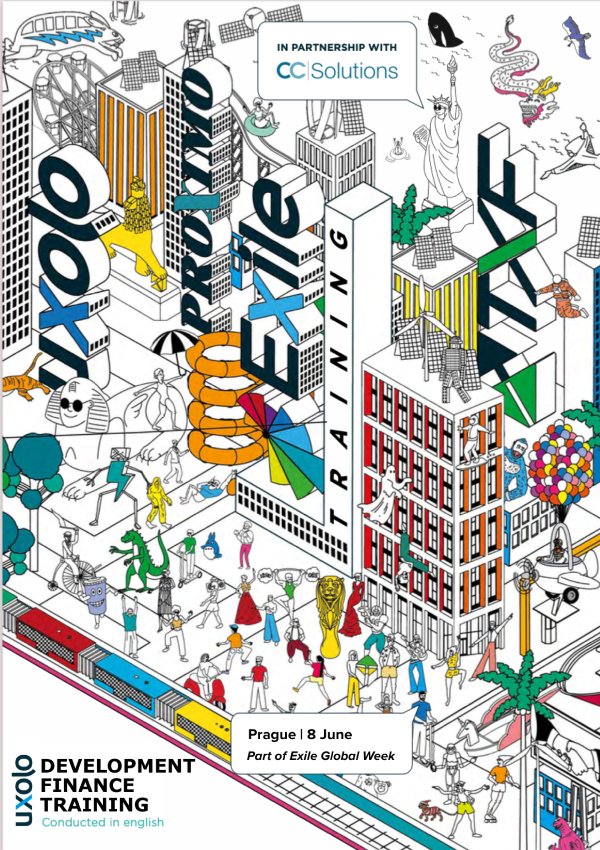What’s in a name?
BII has released its first annual accounts since the name change from CDC and the start of its five-year investment strategy. Was the name change just a rebranding or radical revamp?

When Commonwealth Development Corporation (CDC) was renamed British International Investment (BII) in 2022 concerns were voiced that a name change to “better reflect the scope of its work”, along with jingoistic nonsense about its ambitions by then Foreign Secretary and economic arsonist in waiting Liz Truss, was in fact a move by the UK government to turn CDC into a more commercial promotion agency for UK overseas business interests, in effect blurring the lines between BII and the UK’s export credit agency UKEF.
The concerns were not without grounds. Although an operationally independent entity in its investment decisions, BII’s ability to take on heightened risk, which had been upped since 2015 by capital injections, appeared to be rapidly shrinking again. In 2019/20, capital injections into CDC by the Foreign, Commonwealth and Development Office (FCDO) – CDC and now BII’s sole shareholder – totalled £995 million. By the time of the renaming to BII in 2022, that had dropped to £200 million (planned) – £85 million less than the FCDO capital injection into CDC in 2016/17.
The UK overseas aid budget – overseen by the FCDO – was cut from 7% to 5% of gross national income in 2019 and will now remain at that level until at least 2028. And that smaller ODA budget has been and continues to be raided by other government departments, notably the Home Office for its UK refugee programmes (non-FCDO government departments accounted for 37.7% of the total UK £12.8 billion ODA spend in 2022).
Arguably that backdrop should not matter to BII given its mandate from the UK government. BII is expected to be largely self-financed and, on average, only accounts for around 4% of the UK’s ODA allocation: the BII budget for 2023-24 is just £280 million.
But that ODA allocation is important, because the smaller it becomes (and in real terms it is still shrinking given the fall in the strength of Sterling and supply chain cost inflation for the kind of projects BII invests in) the more risk averse BII is pressured to be by the circumstance it finds itself in – in short, the funding is the BII risk enabler because without it, capital preservation takes over from impact as a key driver.
Is BII just CDC in new clothing?
BII recently released its 2022 annual report, the results from the first year of its 2022-26 strategy. The new strategy is meant to be a broader one, with a bigger focus on climate finance, gender lens investments (BII’s 2x challenge) and digital. And at least in terms of climate finance, BII is delivering, investing £591 million last year, which equates to 46% of its annual commitment.
In terms of injected funding, BII is arguably a blast from CDC’s past because although CDC capital injections rose between 2015-19, prior to that it had been self-financing by re-investing returns from its portfolio into new investments.
Ironically, zero government cash injections into CDC between 1999 and 2015 resulted in some of the key criticisms of the DFI. In 2016 the National Audit Office (NAO) claimed CDC insufficiently demonstrated making any “lasting difference” to the world’s poorest.
That should have been no surprise given CDC’s profit margins were historically high. In 2017, the NAO noted that while the financial target for CDC’s portfolio return was set at 3.5% in 2012, CDC returns had averaged 10.3% since then. In short, CDC had become risk averse without capital injections and gone the logical route of trying to play it safer and up profits to boost its investment capital availability.
What happened after those criticisms – as capital injections into CDC rose to an average £750 million per year between 2018/19 and 2021/22 – was a significant upping of CDC’s game. After three years of consultation and reviews with CDC, in 2021 the Independent Commission for Aid Impact (ICAI) announced that CDC had changed, ‘that its investment decisions were finally addressing development impact throughout the investment cycle and that consideration of impact was driving active management of investments to a much greater extent.’
The Uxolo perspective
So can BII do what CDC could not prior to capital injections – create significant impact and maintain a high-risk appetite whilst being predominantly self-financing and on a shoestring budget from the UK government? For all the reasons above it is unlikely to be able to deliver on all its stated ambitions.
BII’s 2022-2026 strategy outlines plans to commit up to £9 billion over the period – $2 billion up on the £7 billion committed over the 2017-2021 strategy period. Its focus, outlined at launch, was “green infrastructure, technology and other sectors to support people in Africa, Asia, Asia-Pacific and the Caribbean,” the latter two regions being an expansion of its remit. More specifically, BII will target 30% of all new investments to qualify as climate finance (a target it more than met in terms of new commitments in 2022), test new investment approaches for natural capital solutions, adaptation and resilience, and provide climate finance to the Indo-Pacific. On the gender front, BII aims to have 25% of all new investments to qualify under the 2X Challenge as ‘gender lens’ finance.
Historically, CDC investments tended to focus more on stable and middle-income countries – a reflection of its risk aversion due to lack of government funding. In 2011, 25% of its portfolio was in fragile and conflict-affected states, although this grew to 41% by 2017 after the government funding tap reopened in 2015.
The portfolio BII inherited from CDC was focused on financial services and infrastructure, which between them accounted for 59% of CDC’s investment portfolio in 2021. And India was the most significant country for investment, accounting for 28% of the portfolio.
After just one year those numbers have, understandably, changed little: financial services and infrastructure 57%, India 27%. But in terms of expected returns on its portfolio BII has arguably pulled in its horns from the pre-2017 CDC days: “Our new financial performance measure, as defined in our 2022-26 strategy, articulates our appetite for financial risk and return, as well as ensuring the proper stewardship of taxpayer owned assets. We will seek returns of 2% across our total portfolio, measured on a rolling seven-year basis (weighted average). This measure is consistent with our mandate to invest to support the economic stability that will improve the lives of millions of people in the countries where we invest, as well as our own long-term financial sustainability," says BII in its 2022 annual report. The seven-year weighted average annual portfolio return was 6.1% in 2022.
Arguably BII’s 2022 results are a mixed bag, albeit symptomatic of global macroeconomic forces hindering the DFI’s strategy. BII made £1.27 billion of new commitments, down by £600 million on 2021’s £1.87 billion – not good news. Profit after tax also fell to £167 million from £463.5 million in 2021 – but that is not necessarily a bad symptom for a DFI taking impact risk where the commercial sector will not. Total net assets increased to £8.1 billion from £7.7 billion in 2021, but that was because of a higher pace of drawdowns compared with realisations and foreign currency valuation gains.
BII has improved on its climate finance, gender lens investment and high impact potential business – it is also trying to up its transparency. But the key issue is can BII reach its aim of £9 billion of commitments by end of 2026? With £1.27 billion committed last year it is going to come up significantly short if that trend continues.





